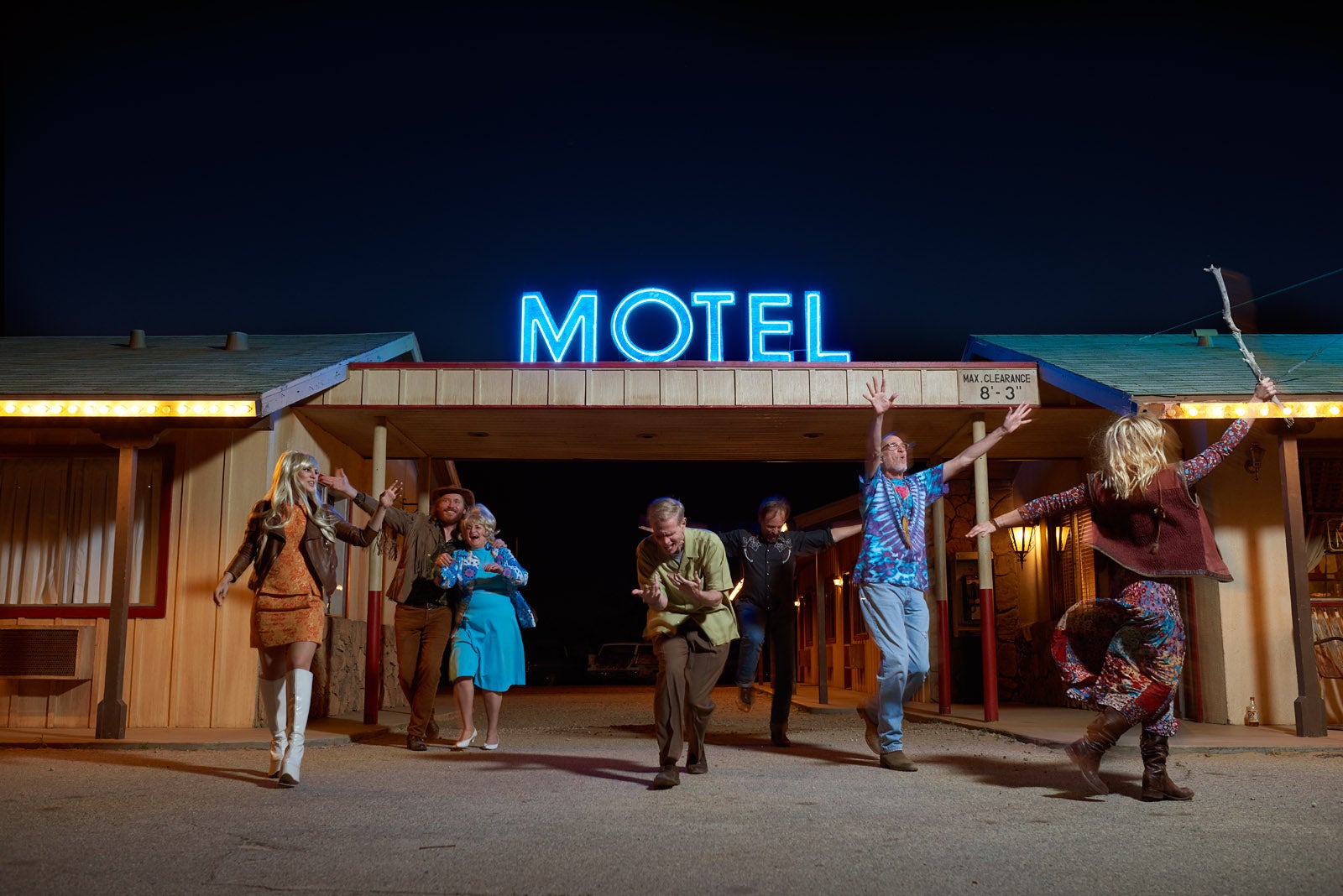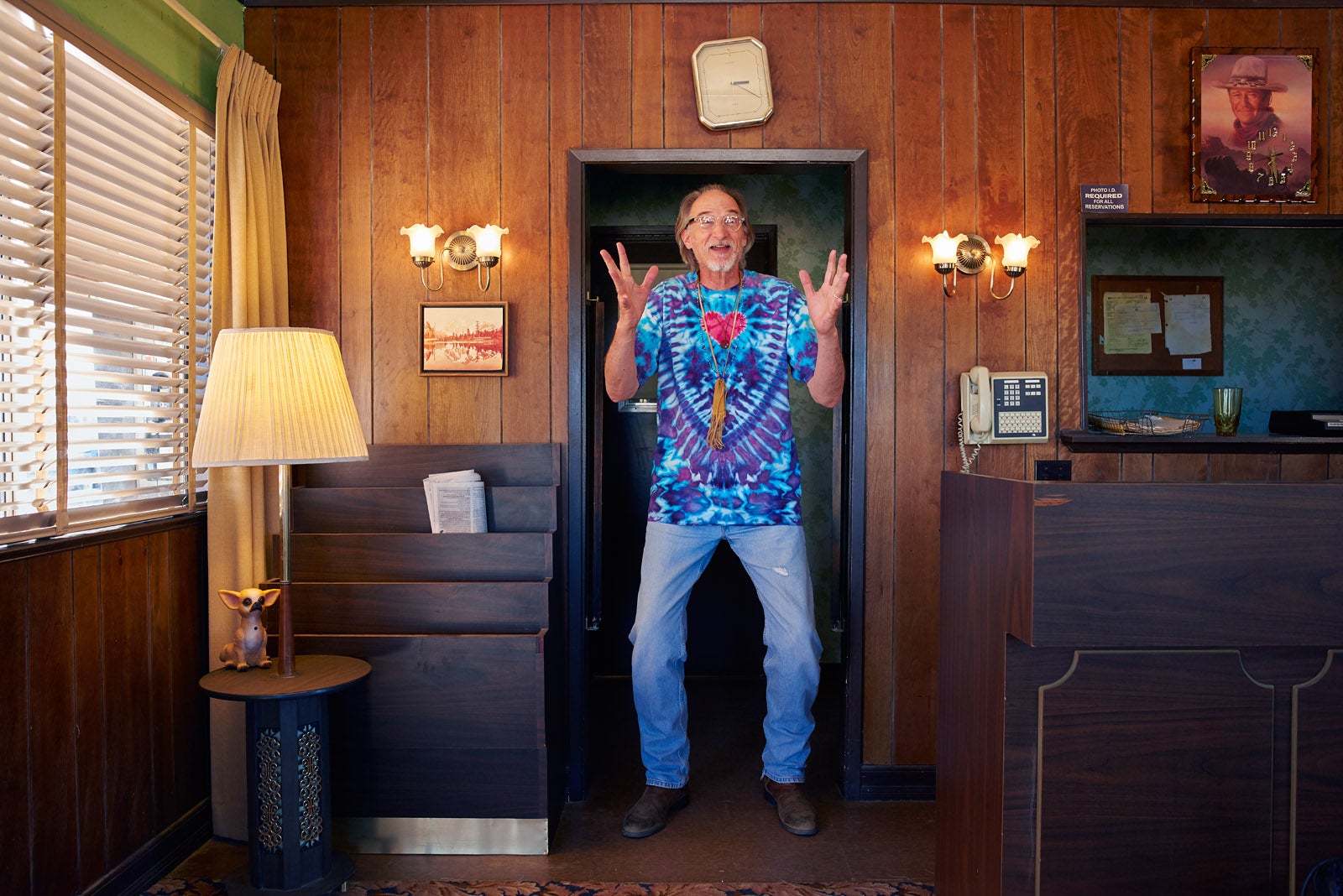The Trip: What happens when a motel-owner tests psychedelic drugs on unsuspecting guests
Artist Matt Henry imagines the effects of 'Acid' James' antics

Your support helps us to tell the story
From reproductive rights to climate change to Big Tech, The Independent is on the ground when the story is developing. Whether it's investigating the financials of Elon Musk's pro-Trump PAC or producing our latest documentary, 'The A Word', which shines a light on the American women fighting for reproductive rights, we know how important it is to parse out the facts from the messaging.
At such a critical moment in US history, we need reporters on the ground. Your donation allows us to keep sending journalists to speak to both sides of the story.
The Independent is trusted by Americans across the entire political spectrum. And unlike many other quality news outlets, we choose not to lock Americans out of our reporting and analysis with paywalls. We believe quality journalism should be available to everyone, paid for by those who can afford it.
Your support makes all the difference.Couples Hank and Betty, and Stacey and Troy, check into a roadside desert motel/diner, unaware that the owner 'Acid' James is hell-bent on testing his latest psychedelic concoctions on his unsuspecting guests.
Fortunately for both couples, James's long-time hippie friends Arlo and Alice are on hand to help guide these simple Southern folk through their first hallucinatory experience.
As social and generational barriers melt in the presence of this supercharged LSD cocktail, the guests finally get the mind-altering taste of the Sixties that had otherwise passed them by.
Featuring actors and crew from Los Angeles, 'The Trip' is a Sixties-inspired story told through photographic images.
The Trip was four months in pre-production, and shot over two days at a standing movie set in the Californian desert, one and half hours north east of Los Angeles.
"The whole thing was organised from the UK, including costume and casting, which made this a real gamble to pull off," says Henry.
"I didn't have the sort of budget film-makers have at their disposal, so I had to organise everything, which meant buying the outfits and wigs over here and sending them across to the actors in Los Angeles for fitting. There was a surreal moment at Christmas when I was snowed in at my dad's house in a tiny village in the hills of North Wales, casting Hollywood-based actors over the Internet. But somehow it all came together.

"The photographic image is still seen as the poor relation to the moving image with regards to storytelling," Henry continues. "But for me, stasis provides qualities that can advance narrative. On a purely aesthetic level, there's the ability to consider composition, colour, shape, and form in a way not possible at 24 frames per second.
"To draw viewers into a static image and allow them to look around is to be given the opportunity to seduce. This is a gift, and the first step in involving them in your story. Then it's the ambiguities of the still that can fire the imagination; to leave the viewer to fill in the blanks and construct their personal narrative."
Join our commenting forum
Join thought-provoking conversations, follow other Independent readers and see their replies
Comments